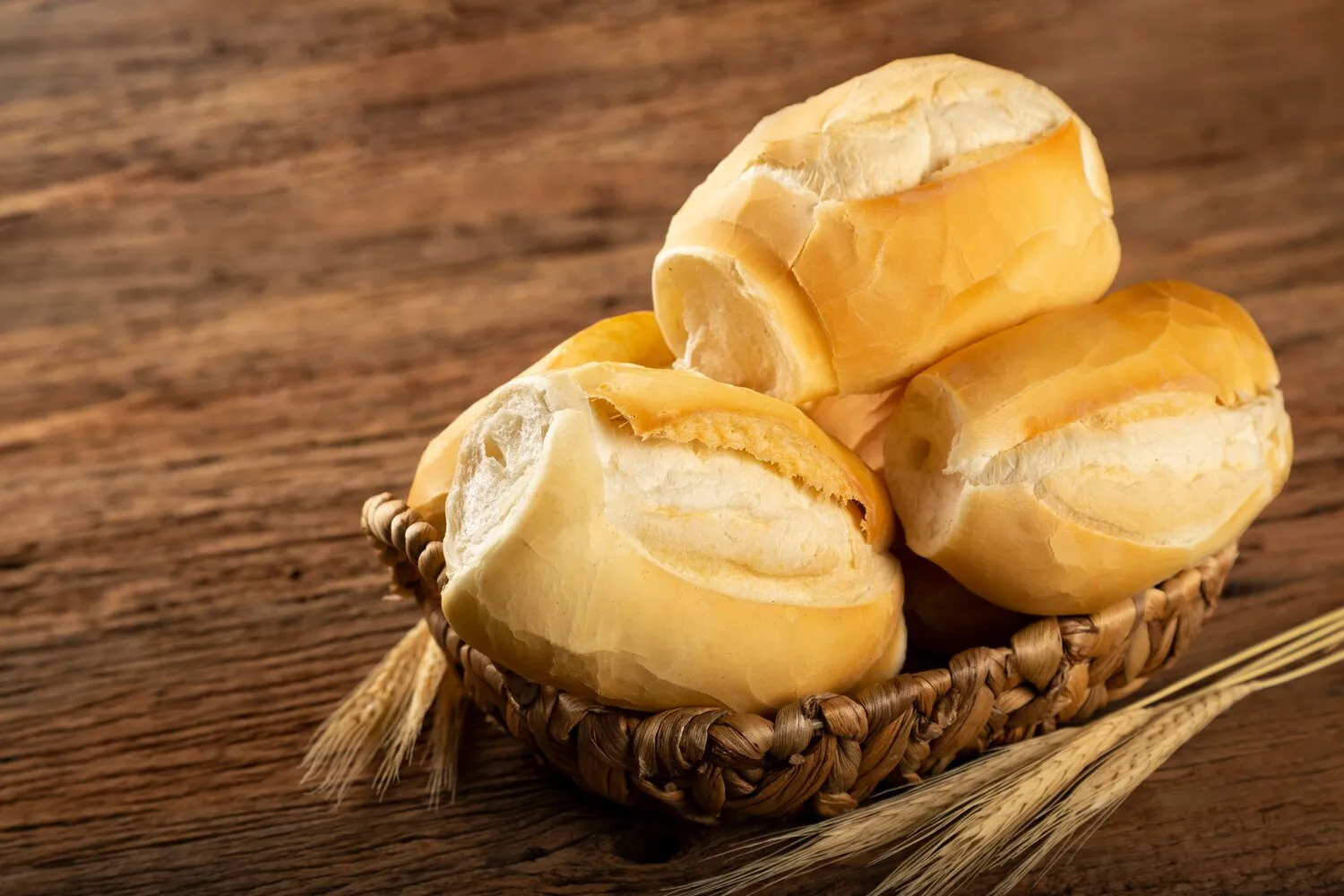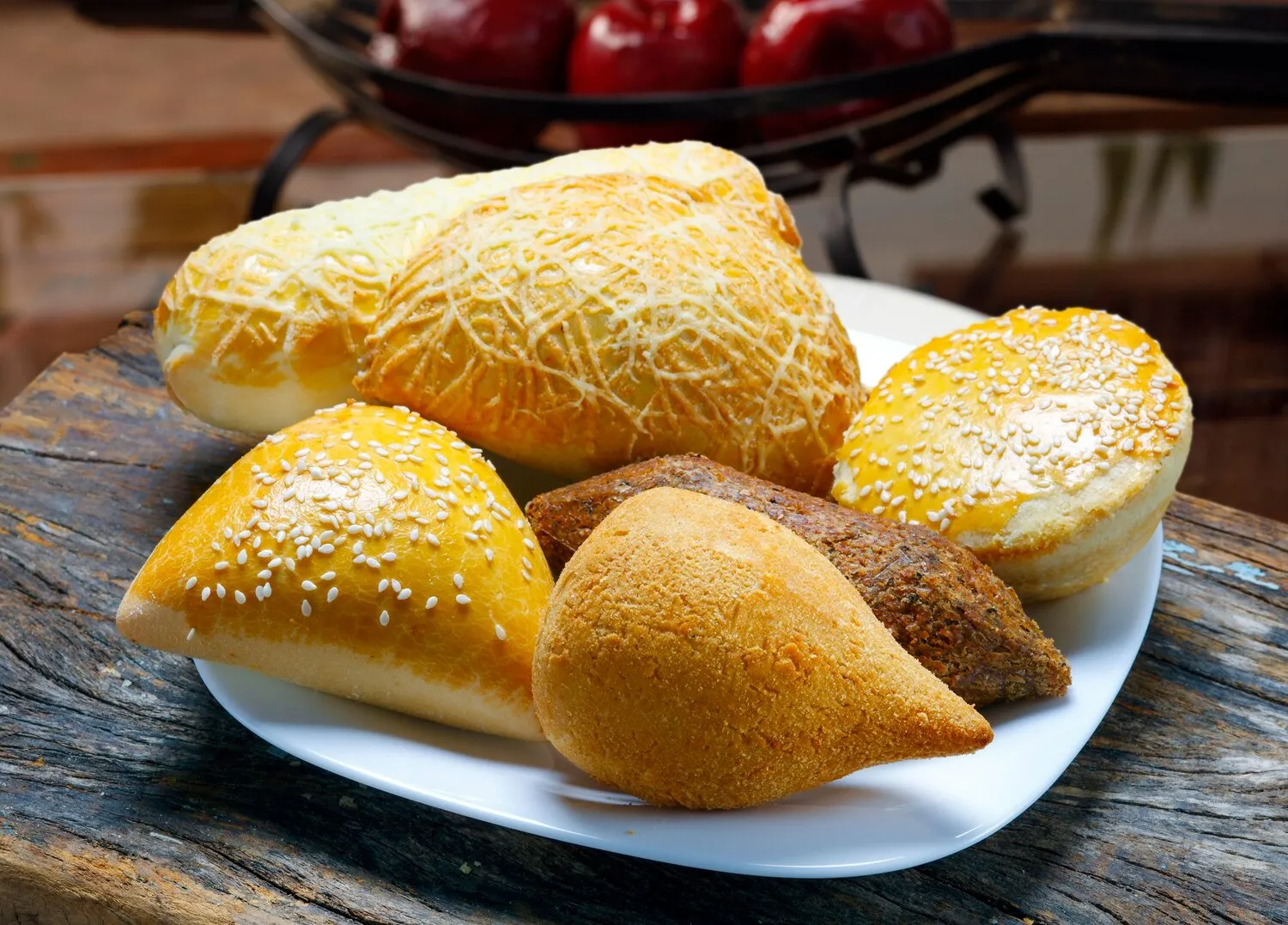
Pão Francês
Classic French bread roll, a staple in Brazilian bakeries.
Nutrition Facts
* The % Daily Value (DV) tells you how much a nutrient in a serving of food contributes to a daily diet. 2,000 calories a day is used for general nutrition advice.
Panificadora Rios
Despite its name, Pão Francês ('French bread') is a Brazilian creation, heavily influenced by the arrival of European immigrants in the late 19th and early 20th centuries, particularly French and Portuguese bakers. Brazilians adapted European breadmaking techniques and ingredients to create a unique, crusty roll perfectly suited to local tastes and available ingredients.
Pão Francês is deeply ingrained in Brazilian culture and is a staple food found in nearly every bakery across the country. It is a symbol of everyday life, a common sight at breakfast tables, and a frequent accompaniment to meals throughout the day.
Ubiquitous Presence
Pão Francês is arguably the most popular bread in Brazil, readily available at bakeries, supermarkets, and even small corner stores.
Breakfast Staple
It is a classic breakfast item, often served with butter, cheese, or ham, and accompanied by coffee or juice.
Versatile Accompaniment
Pão Francês complements a wide variety of dishes, from soups and stews to sandwiches and salads.
Social Significance
Buying Pão Francês fresh each morning is a common ritual for many Brazilians, fostering a connection to their local bakery and community.
Pão Francês offers a simple yet satisfying flavor profile characterized by a crisp, slightly salty crust and a soft, chewy interior. The subtle wheat flavor is enhanced by the baking process, creating a comforting and familiar taste.
The primary flavor components are the slightly salty crust, offering a satisfying crunch, and the mild, wheaty interior, which is both soft and chewy. The fermentation process contributes a subtle tang, while the high baking temperature creates Maillard reaction products that enhance the overall flavor with slightly nutty and caramel-like notes.
High Hydration Dough
Use a relatively high hydration dough (around 70-75%) to create a moist interior and encourage steam production during baking, leading to a crispier crust.
Proper Shaping
Shape the rolls gently to avoid degassing the dough too much. Aim for a tight, smooth surface to create a good rise and a uniform shape.
Steam Injection
Create steam in the oven during the initial baking phase. This can be achieved by placing a pan of hot water on the bottom rack or by spraying water into the oven. Steam helps to keep the crust soft initially, allowing it to expand fully before hardening.
High Baking Temperature
Bake at a high temperature (around 450-475°F or 230-245°C) to promote rapid crust formation and prevent the rolls from becoming dense.
Freshness Matters
Pão Francês is best enjoyed fresh, ideally within a few hours of baking, when the crust is at its crispiest. Reheating in the oven can help revive slightly stale rolls.
Explore additional Bakery dishes and restaurants
Explore BakeryDiscover top dining spots and culinary experiences in Feira de Santana.
Explore Feira de SantanaLearn more about the food culture, restaurant scene, and culinary heritage of Brazil.
Explore Brazil
